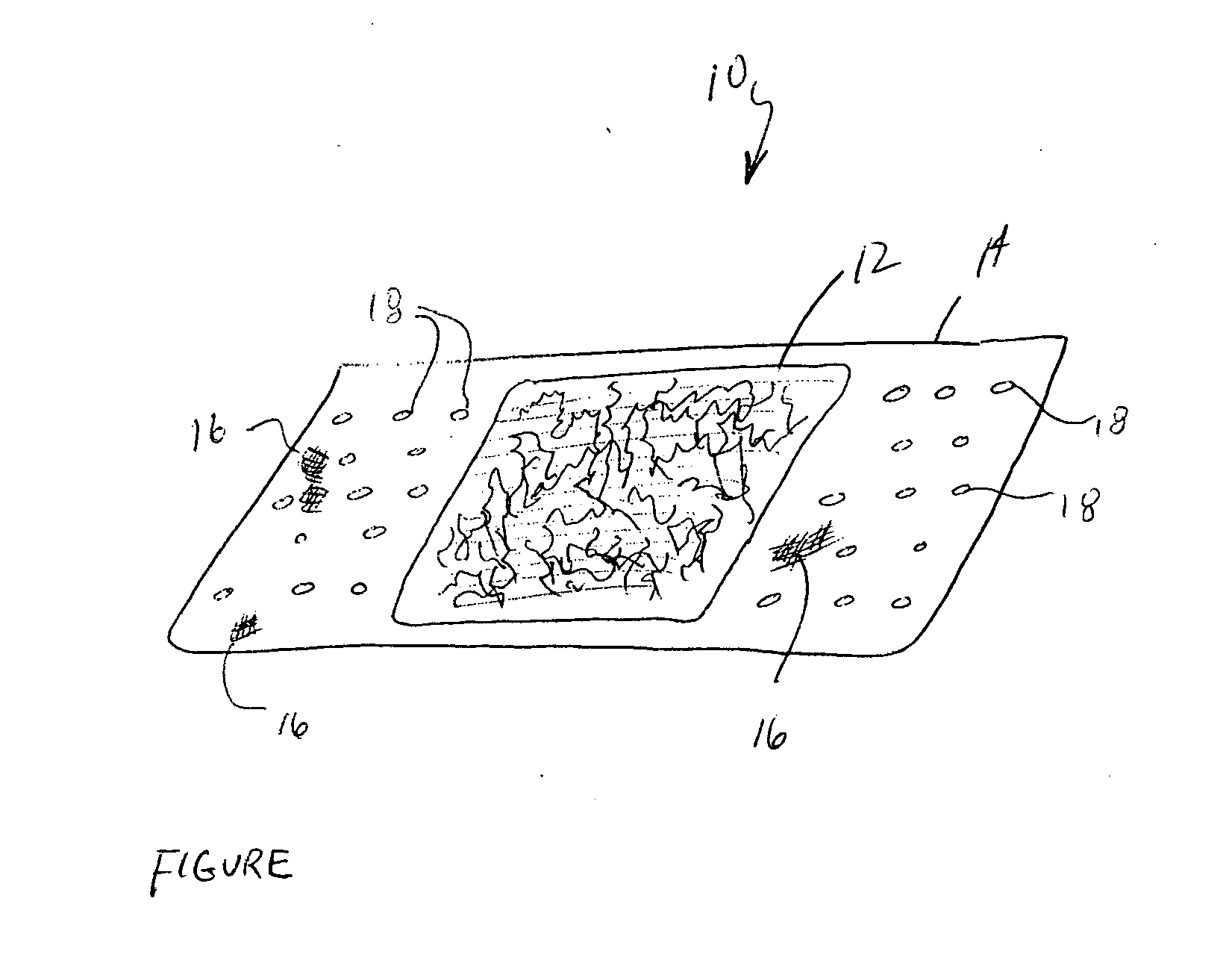Agents and devices for providing blood clotting functions to wounds
a technology of wounds and agents, applied in the field of wound healing devices, can solve the problems of serious complications, infection risk, and complicating the quality and outcome of surgical procedures, and achieve the effects of reducing time, promoting healing, and preventing infection
- Summary
- Abstract
- Description
- Claims
- Application Information
AI Technical Summary
Benefits of technology
Problems solved by technology
Method used
Image
Examples
example 1
Comparison of Speeds of Hemostasis
[0043] When compared to the ORC of the prior art (Surgicel), the oxidized cellulose of the present invention exhibited a tendency to produce clotting effects significantly faster. For example, in blood clot testing performed using a prothrombin test (PTT), the ORC did not establish hemostasis after 10 minutes, whereas the oxidized cellulose of the present invention established hemostasis after 4.3 minutes. Furthermore, it was noted that the ORC gelled to form a false clot against which the actual clotting took place, while the oxidized cellulose of the present invention absorbed blood to immediately produce a clot.
[0044] The foregoing results were confirmed in tests during non-survival surgery performed on pigs. A large incision (1.5 inches long and 0.5-0.75 inches deep) was made in the spleen of a pig. Rapid hemostasis was achieved with the oxidized cellulose of the present invention, whereas the ORC appeared to be ineffective (after 10 minutes, ...
example 2
Comparison of Resorbability
[0045] The resorbability of the oxidized cellulose of the present invention was determined using an implantation test performed on baboons. Apicoectomies (root end surgeries) were performed on the baboons. Small pellets of the oxidized cellulose were implanted to provide hemostasis at the root ends. No traces of fibers of the oxidized cellulose were present after 120 days of healing, and the bone surrounding the retrofilled material (the oxidized cellulose pellets) displayed normal anatomical histological features.
example 3
Comparison of Acidity Values
[0046] The acidity values of both the oxidized cellulose of the present invention and the ORC (Surgicel) were measured and compared. In determining the acidity values, both the oxidized cellulose of the present invention and the ORC reached pH values of about 3.5 to about 3.9. The difference in the values, however, is noted with regard to time. The ORC reached pH 3.5 in a few minutes, whereas the oxidized cellulose of the present invention reached pH 3.5 after about an hour.
PUM
| Property | Measurement | Unit |
|---|---|---|
| Fraction | aaaaa | aaaaa |
| Flow rate | aaaaa | aaaaa |
| Content | aaaaa | aaaaa |
Abstract
Description
Claims
Application Information
 Login to View More
Login to View More - R&D
- Intellectual Property
- Life Sciences
- Materials
- Tech Scout
- Unparalleled Data Quality
- Higher Quality Content
- 60% Fewer Hallucinations
Browse by: Latest US Patents, China's latest patents, Technical Efficacy Thesaurus, Application Domain, Technology Topic, Popular Technical Reports.
© 2025 PatSnap. All rights reserved.Legal|Privacy policy|Modern Slavery Act Transparency Statement|Sitemap|About US| Contact US: help@patsnap.com


